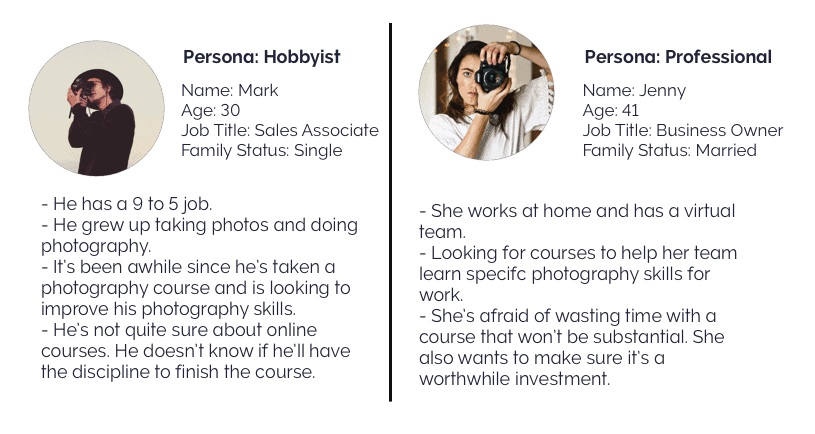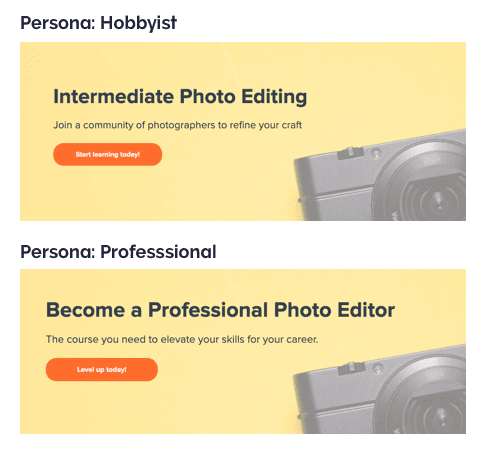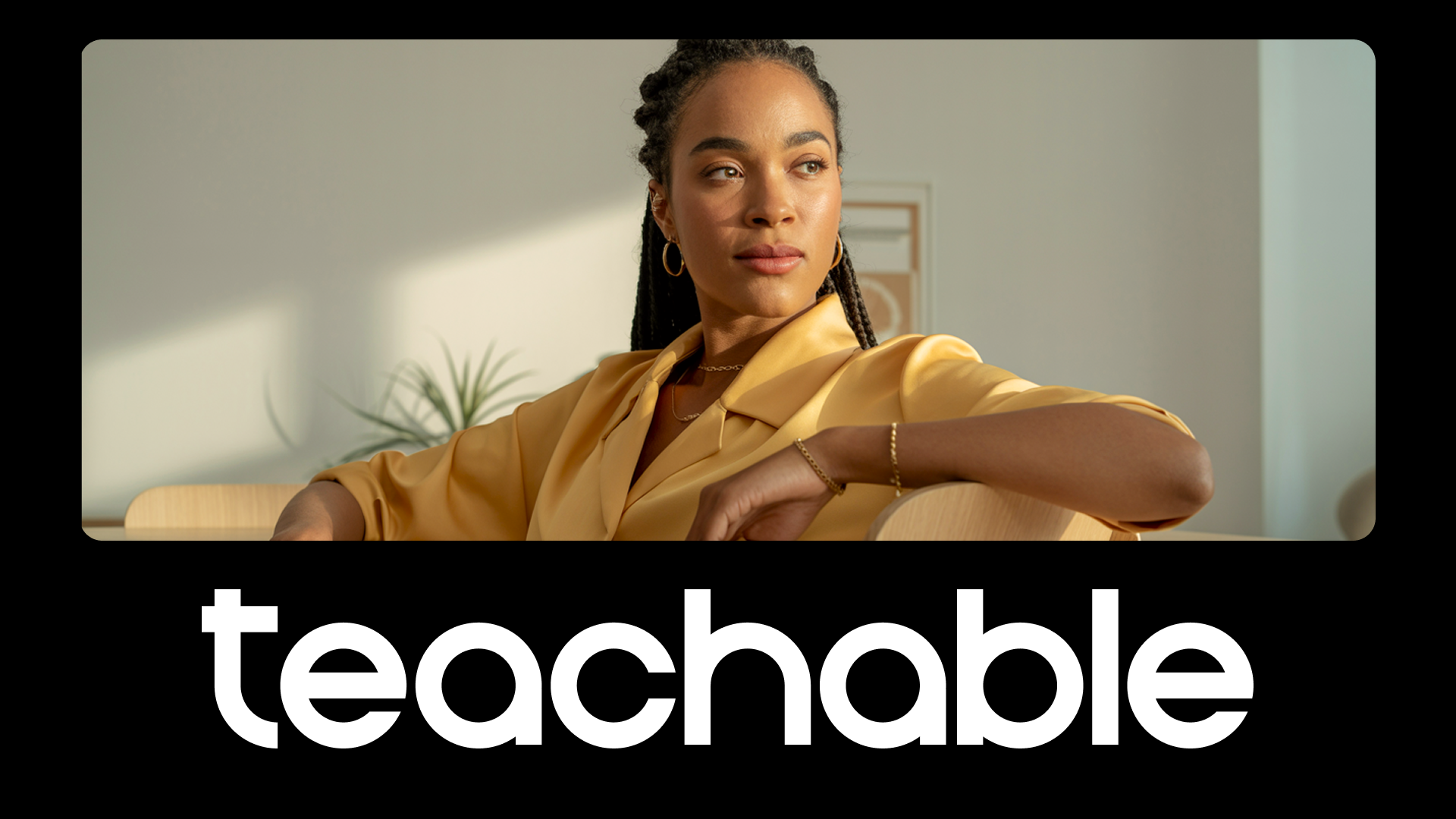Everyone has a different journey when it comes to building their online business. Some do it with a business plan in mind, while others grow into it organically. Regardless of how you started, one important stage that every business owner will inevitably come across is identifying their target audience.
As you continue to grow your business, there will be a pivotal point when you revisit your website, content, or social media following and think to yourself: “Who is interested in the content and products I’m offering? How can I better communicate with them?”
Segmentation and personalization are the keys. You want to understand who your audience is, how they think and feel, what pain points they want to solve, and what goals they want to achieve. You can address these emotional points with a strong messaging strategy once you build an audience persona.
What is an audience persona?
An audience persona is your ideal audience. This persona should describe your typical customer based on detailed audience research.
As much as you want to really get to know everyone in your audience, that’s not realistic. You can’t get to know every customer or prospect individually. That’s where the personas come into play. The goal is to create an audience persona as if he or she were a real person, so you can have them in mind as you craft targeted marketing messages.
Because so many businesses offer different products, keep in mind that your business may have more than just one audience persona. At the same time, if you find that you have too many (i.e. five or more), then you may want to drill down a little more.
An audience persona should include basic demographic information, buying behavior, user goals, pain points, and behavior as it relates to your business.
How to build an audience persona
1. Research your audience
There are many methodologies when it comes to user research. Here are few ways to learn more about your audience:
Run surveys: Send out an email blast to your mailing list, add it to the end of your online course, or link it to your Instagram story. Keep the surveys short and simple. Your audience is most likely to fill it out when they come across it on the phone, so you want them to be able to get through it within two to three minutes.
Surveys are typically best used to learn more about your audience’s demographic information (age, income, location, etc…) and general pain points and goals.
Conduct user interviews: Reach out to a few of your students, email your subscribers, or social media followers. Set up some time to talk to them on the phone and get to know them. Here are some sample questions in a user interview script:
- Where are you calling from?
- What’s your family status?
- What’s your employment status?
- How did you first hear about me or my company?
- Why did you subscribe to my newsletter / enroll in my course?
- What is the biggest challenge you have right now?
- What are your biggest goals?
- How did you expect my content to help you achieve your goals?
User interviews are best used to dig deeper into user behaviors (such as how and why they use your website/course) and their buying behaviors. You can ask them very specific questions and ask them to share their thought process behind each decision.
Be considerate of their time! If they agree to do a user interview, it’s nice to offer them a gift card or a discount to one of your offers.
2. Look at your analytics
If you have Google Analytics set up, take the time to look at the demographic information of your website traffic. Similarly, look at the analytics you have access to on your different social media platforms.
More importantly, you can use any other web and data analytics to see how users are interacting with your website. Are there specific pages that convert better than others? What are your top five most visited pages?
3. Identify customer pain points and goals
Once you’ve gathered this user information, start to identify pain points and goals. Hearing your audience’s responses will be very helpful in understanding why certain challenges exist for them. Best of all, you’ll hear it in their own words so you can better tailor your messaging back to them.
Plus, that research stays with you. You start to have a deeper connection with your audience, and a better understanding of who your audience is, and what motivates them.
Why’s that important? Because the next time you open a new document and start writing email, you know exactly what they are going through, what stage of learning they are in, and how you can help them.
4. Look for patterns
Now that you’ve identified your audience’s pain points and goals, are there any patterns? Sort your research by referral channel (how they find your website), age demographics, etc. This analysis might take some time, but it’s worthwhile when you finally spot the pattern and everything else will fall into place.
5. Build your personas using your research
Each audience persona should include:
- Persona Name (Hobbyists, Professionals)
- Fictional Name
- Job Title
- Demographics: Age, education, ethnicity, family status
- Environment: Physical, social, technological
- The goals they are trying to achieve by visiting your site
- The fears or concerns they have
- Quote that summarizes what is important to this persona group
How to use your audience persona in your marketing
Once you have your personas, make sure you use them! These personas will make it a lot easier to craft targeted marketing messages. Whether it’s your newsletters or your sales pages, these audience personas will help you segment and personalize your messaging.
Let’s take these two personas for a photography business with an online course as an example.

If these two were the main personas, there would be two separate sales pages with different headline text. Use the personas you have created and specifically craft messaging that speaks to their pain points and their goals.

The one on the top personalized for the Hobbyist, who is afraid of taking online courses because he’s concerned about his own accountability. On the sales page, it’s important to then focus on addressing those fears and how he can achieve his goals.
On the other hand, for the Professionals, she is looking for a course to support her team’s career. We want to immediately surface the value proposition that would be most important to this group—elevating their skills for their career.
With the multiple sales page feature on Teachable, you don’t have to choose one over the other. Duplicate your core sales page and change the copy to target different segments of your audience for better conversions.
If you market to everyone, you’ll reach no one.
Giving it time
Remember, you won’t build your personas overnight, and they are never really “finished”. Your business is growing and your audience may change. What is important is to keep these research channels open and available for you, so you can check back in with your user base before you make any changes and launches.
Join more than 150,000 creators who use Teachable to make a real impact and earn a real income.


.png)



.png)

